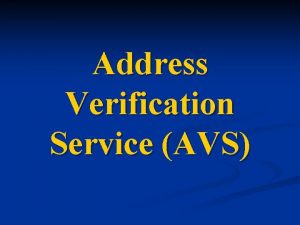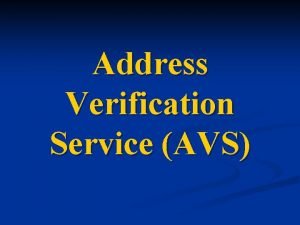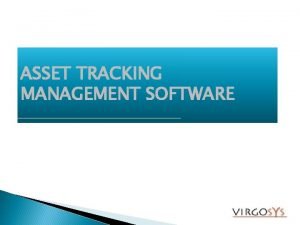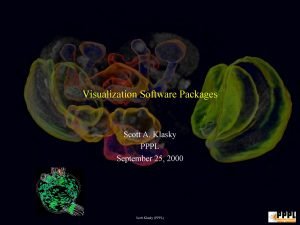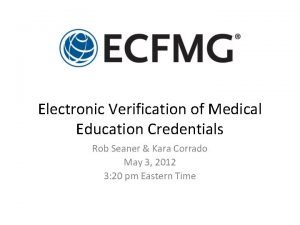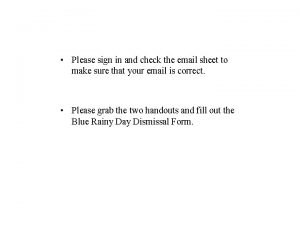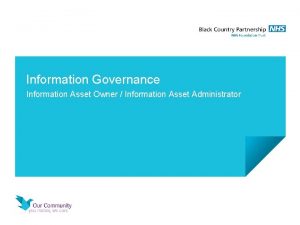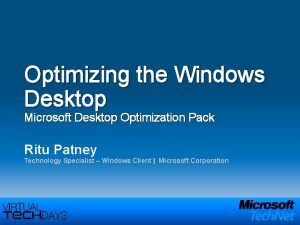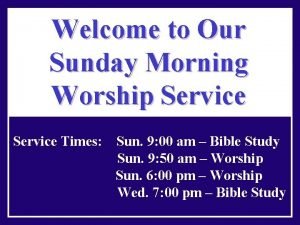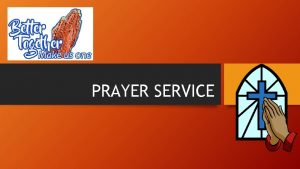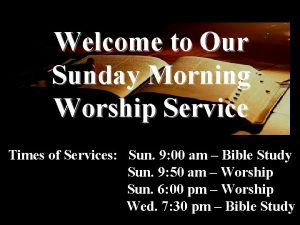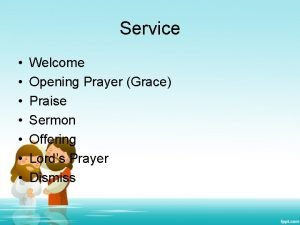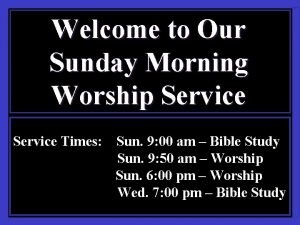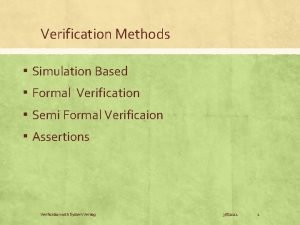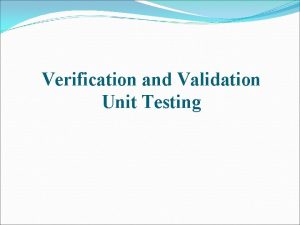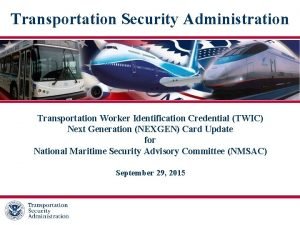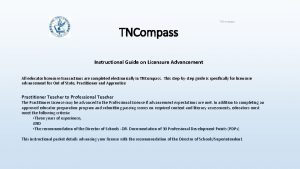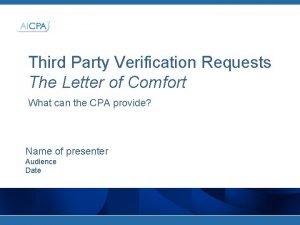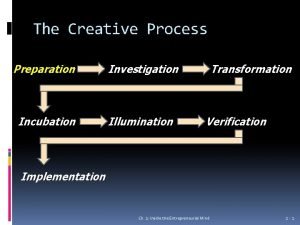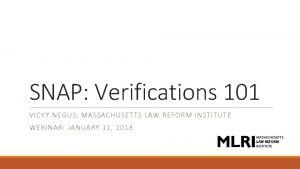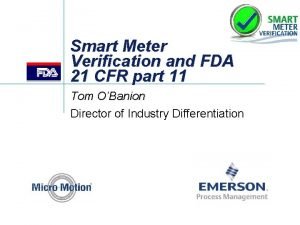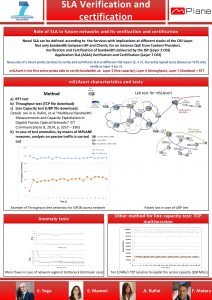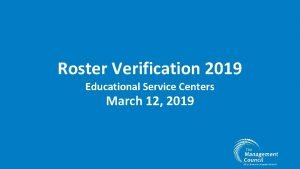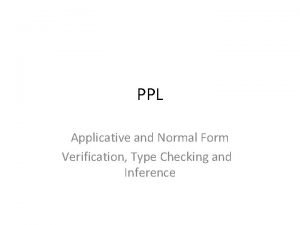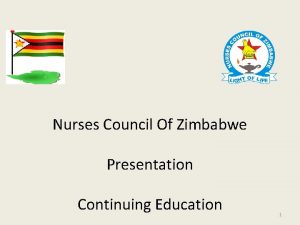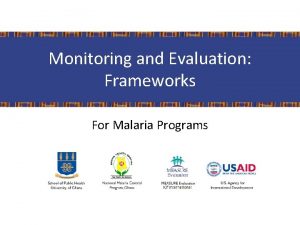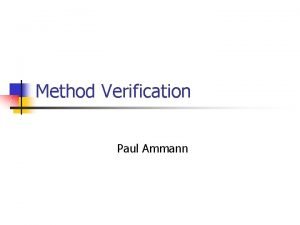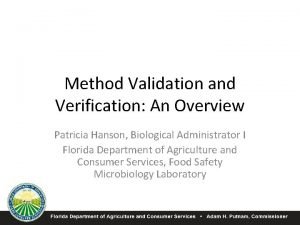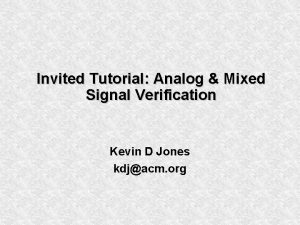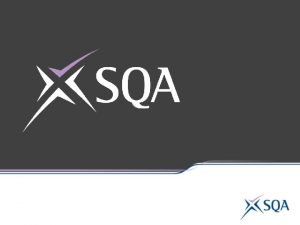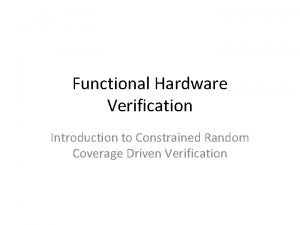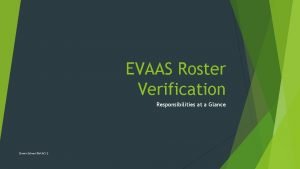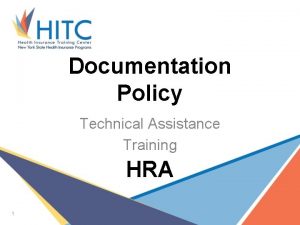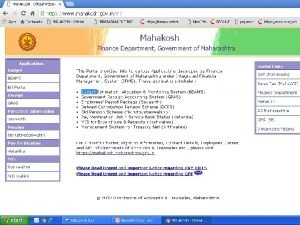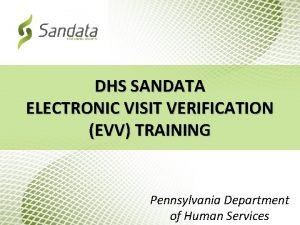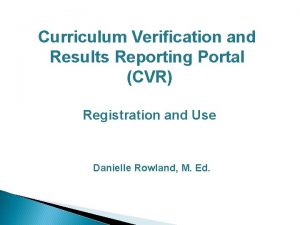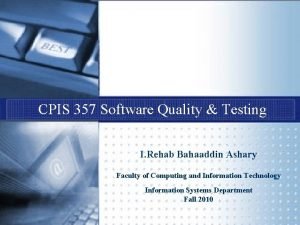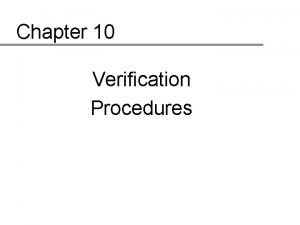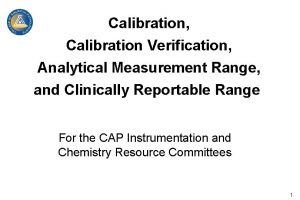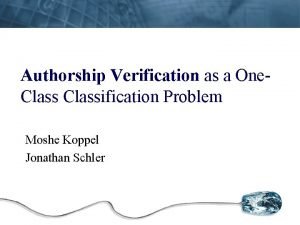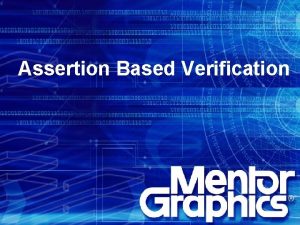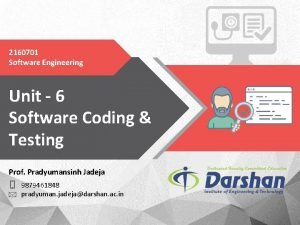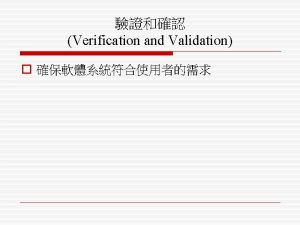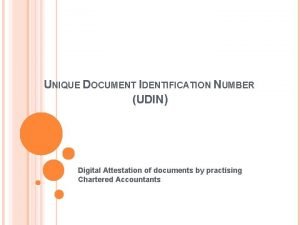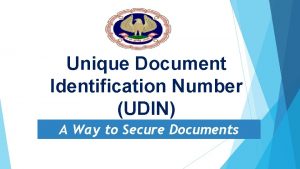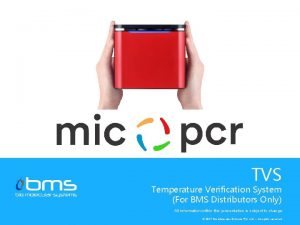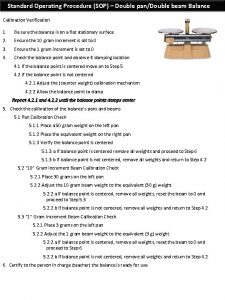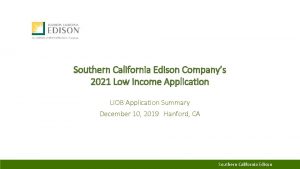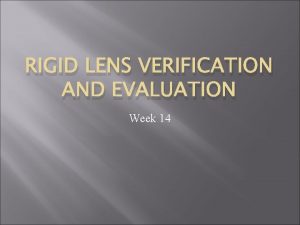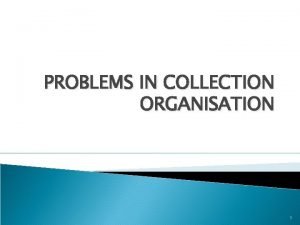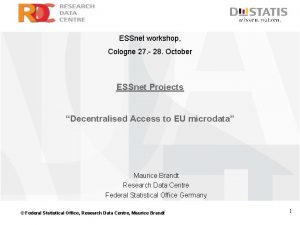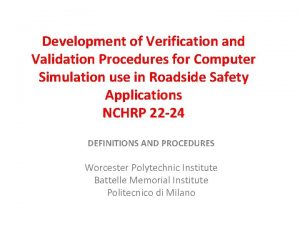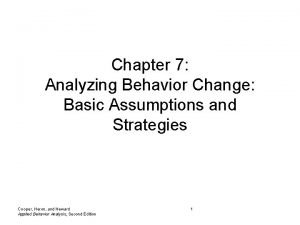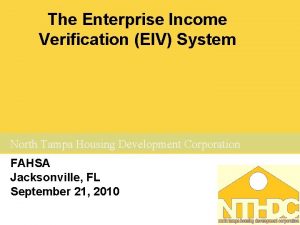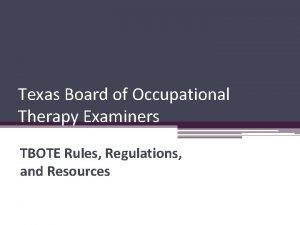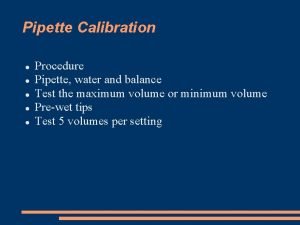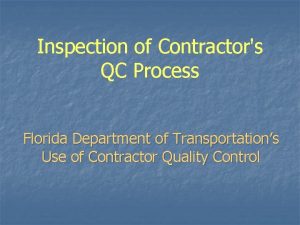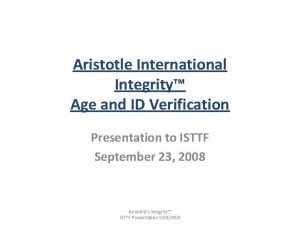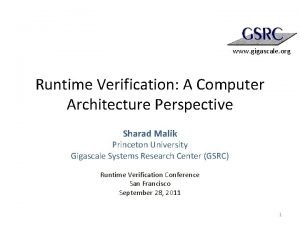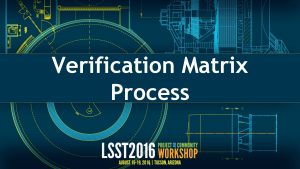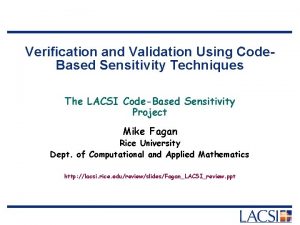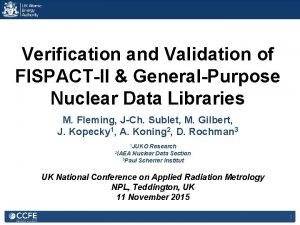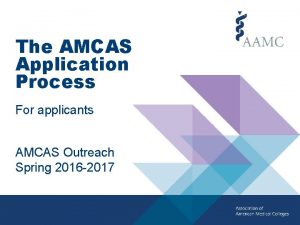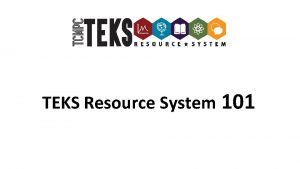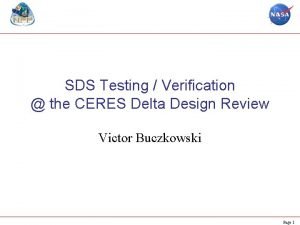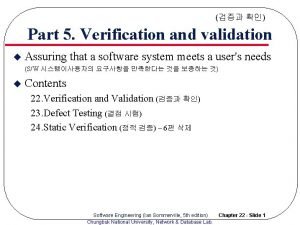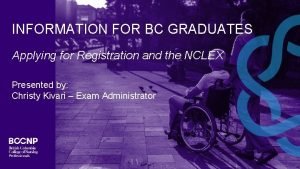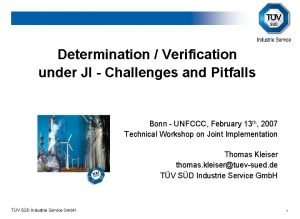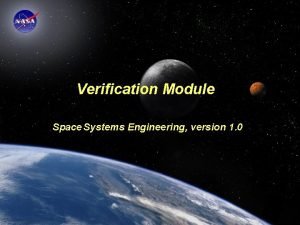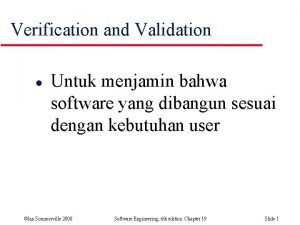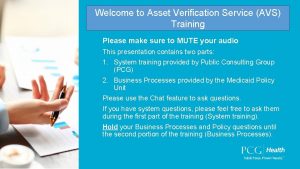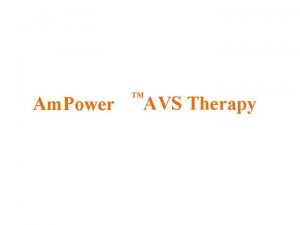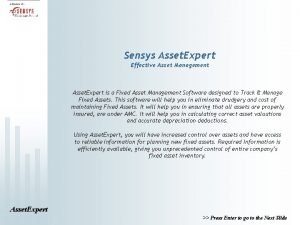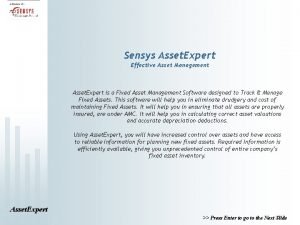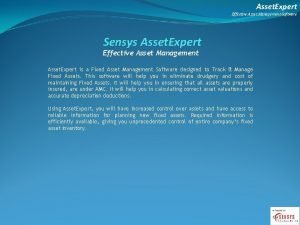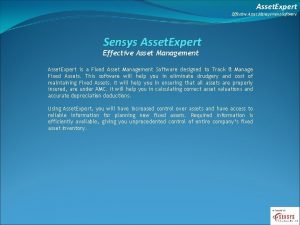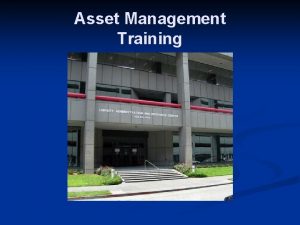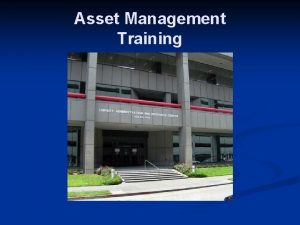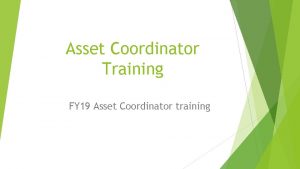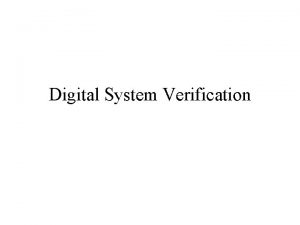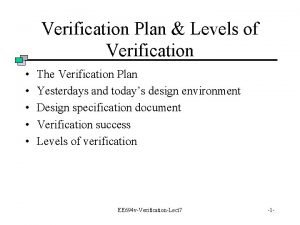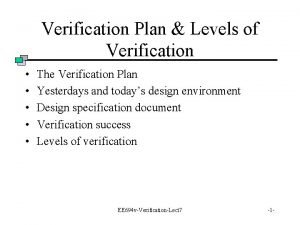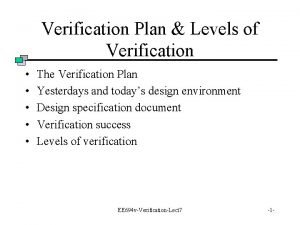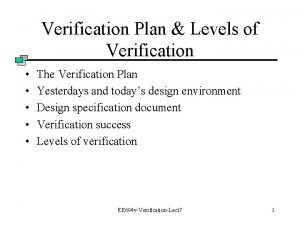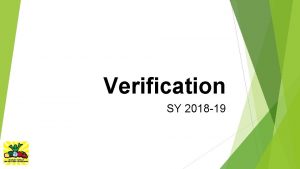Welcome to Asset Verification Service AVS Training Please



















































































































- Slides: 115

Welcome to Asset Verification Service (AVS) Training Please make sure to MUTE your audio This presentation contains two parts: 1. System training provided by Public Consulting Group (PCG) 2. Business Processes provided by the Medicaid Policy Unit Please use the Chat feature to ask questions. If you have system questions, please feel free to ask them during the first part of the training (System training). Hold your Business Processes and Policy questions until the second portion of the training (Business Processes).

Oregon Department of Human Services Asset Verification Services Portal Training 2018

Agenda: • Checklist for Success • AVS Intro • Portal Demonstration • • • Case Queue Ad Hoc Requests Case Dashboard Application Information Account Information Property Information AVS Summary Eligibility History Reporting User Support 8 -15 16 -18 19 -20 21 -22 23 -27 28 -29 30 -32 33 -34 35 -37 38 -39 • Review Checklist for Success • Business processes • • • Policy Principles Oregon Access narration Using AVS at Application Using AVS at Redetermination Using AVS for Changes Closing the AVS Case Results After Decisions Examples Ad-hoc Requests Additional Bank(s) for Verification – Directed Account Search AVS Case Structure and User Roles Resources and Contacts 42 -55 56 -59 60 -65 66 -69 70 -73 74 -75 76 -77 78 -87 88 -104 105 -109 110 -112 113 -115 • Question and Answer 3

Checklist for Success: A User’s Guide to AVS Questions to check for understanding. At the end of the training users should be able to answer the questions below: [✔ ] Why are States using AVS? [✔] How does AVS work? [✔] How is a case assigned? [✔] How are case queues organized? [✔] How do I review case detail? [✔] Where do I go to add information about a spouse? [✔] How do I decide on a case? [✔] How are cases archived within the portal? [✔] How do I edit a case? [✔] How does the Portal help users generate reports? [✔] How can I review basic functionalities within the portal? 4

CMS Mandated electronic, Asset Verification System (AVS): Section 1940 of the Supplemental Appropriations Act and CMS Memorandum 011309 require all states to implement an Asset Verification System (AVS) to verify the assets of Medicaid aged, blind and disabled applicants and recipients in a way that is “consistent with the approach taken by SSA…” CMS’ AVS Requirement PCG’s AVS Request and response system must be electronic: Requests and responses will be communicated via web portal. System must be secure based on recognized industry standards: Adheres to NIST standards, The Financial Modernization Act of 1999 (Gramm-Leach Bliley), Privacy Act of 1974, Computer Security Act of 1987, OMB Circular A-130, Health Insurance Portability and Accountability Act of 1996, and more. Must establish and maintain a database of financial institutions to participate: Network of 100 percent of the financial institutions (FIs) in the United States. Requests must also be sent to FIs other than those identified by the applicant: Every request is process through the Early Warning Service network of the largest national banks AND Geographic Undisclosed Account Radial Detection (GUARD) application to detect both national and local accounts. Responses must include information on both open and closed accounts going back for a period of up to 5 years: All responses feature up to 60 months of account balances, account owners, earned interest, open/close dates, account types, and account locations. AVS must provide evidence that the search was completed even if no assets are located: All requests resulting in no accounts being located are identified based on the FI and request date and a “No Accounts Found” message will display. 5

Benefits of AVS: Introducing an electronic, automated asset verification will not only reduce enrollment levels by discovering ineligible and/or fraudulent applicants and beneficiaries, but will also increase worker productivity through the introduction of automation into the eligibility determination process. Program Integrity: Assurance that only those members who are truly eligible continue to receive benefits. Cost Savings: Increased eligibility determination accuracy and reduced worker errors. Time Savings: Reduced staff time spent collecting and reviewing physical documents and navigating disparate data sources. 6

How PCG’s AVS Works: Comprehensive Asset Search • • • National account search for any accounts maintained by the largest banks. Local account search based on geographic proximity. Directed account search to query any financial institution. 7

Portal Access: Production Environment • https: //or. pcgusavs. com/ Demo Environment • https: //demo. pcgusavs. com/ 8

Case Queue: The Case Queue screen serves as a user’s “home” screen.

Case Queue: The Case Queue is the first screen to display after logging into AVS, where users may: • • • View cases assigned to self and / or district, office, or unit, depending on user role; Choose the number of cases on a single page by selecting from page size drop-down; Sort the field of cases clicking column headers once; and, Filter for unassigned cases, by AVS Result, Case Status, District, Office, Worker, Request Type, or any combination. Enable users to make instant edits to and initiate new AVS requests on an existing case. Will Not Respond Indicator Case Queue Definitions AVS RESULT: • Processing AVS Result: case is within 15 calendar days of initial request. • Under Resources - $X: when countable resources are at or below program threshold. • Over Resources - $X: when countable resources are above program threshold. • 15 Days… No Accounts Found: no accounts recovered between 15 -90 calendar days. • No Accounts Found: no accounts recovered after 90 days. CASE STATUS: • New: represents cases which have been created (i. e. mid-day) but not yet launched. • Error: alerts users of inconsistencies. • Processing ‘X’ days left: case that is awaiting results within 15 days of the initial request. • Pending Review: 15+ calendar days have passed and case is ready for review. • Review in Progress: case is under review. • Transfer Penalty: disqualifying transfer of assets. • Ineligible: available resources are in excess of the resource level. • Eligible: available resources are below resource level. • Close/withdrawn: indicates that the case is closed or withdrawn & should not receive any additional account information. 10

Navigation Icons: Navigation icons available from every screen to connect users to all portal resources: Case Queue: return to Home Screen. Search: pinpoint cases by CIN, Case #, Registry #, Name, and/or SSN. Reporting: if applicable, access to AVS Review Report, AVS Summary and Detail Report, Case Error Report, Invoice Balance and Invoice Transaction Report, AVS Results After Decision Report, Ad hoc Request Audit Report, Site Access Audit Report, and Case Access Audit Report. Tools: if applicable, navigate to Ad-hoc Request or Manage Users screens. User Account: navigate to Edit Profile or Change Password screens. Help: navigate to Help Screen. Case Correction: edit or update case details. Filter: limit view of cases by assignment status, AVS result, case status, request type, district, office, unit, and/or worker. Results After Decision: if applicable, based on security role assigned, access and review account information returned after the case closed. 11

Case Correction • Users have the ability to edit cases using the case correction tool. This may be used to correct any information initially entered incorrectly on a case or to additional information needed. • Select the Pencil icon which appears on the Case Queue page for every active case • The Case Correction page will then display and be pre-populated with all the case’s information • All fields minus the Applicant Type and Social Security Number can be edited • After any changes are made users must select the ‘Update’ button in the bottom righthand corner of the page • Users can also add up to seven name variations or aliases by selecting the plus sign (+) in the Applicant information section 12

Case Discovery: In addition to sorting and filtering, users may: • • • Search the case queue by entering criteria listed in the box beside or drop-down below. Search will return partial matches i. e. three consecutive digits in SSN field may return multiple matches. Search results will display active case in addition to those which have left the working case queue and moved to eligibility history. Alternatively, users can search or organize the Case Queue by applying specific filters Users can select one or multiple filters at a time. The select filter(s) will remain in place until the users selects the ‘Clear Filter’ option 13

Case Queue: Case Assignment Automatic Case Assignment: • Each batched case sent to PCG may feature district, office, unit, and worker. • Codes unique to a specific worker will appear in the Assigned To column, while the remaining assignment information will exist within application information. • If cases do not feature all of this data or if the batch lists a worker who is not currently set up, the case will be auto-assigned based on lowest level of detail available (i. e. if a worker is not listed, case will be assigned to unit). Manual Case Assignment: • From the case queue, authorized users can manually assign and/or re-assign cases to either district, offices, units, or workers. Select case or cases Select Assignment Assign or Reassign 14

Case Queue: Case Decisions: Case Decision Methods: • Review in Progress: Case is currently being reviewed by AVS User. • • Transfer Penalty: Disqualifying transfer of assets. Manual case dashboard: best for updating eligibility on a single case. • Ineligible: Available resources are in excess of the resource level. • • Eligible: Available resources are below resource level. Manual case queue Page: best for updating eligibility for several cases at once. • Close/Withdrawn: Case has been closed or withdrawn. This will be the only option available to the state of OR. Select case or cases Select Decision Save 15

Ad Hoc Requests: Users can submit cases manually into the AVS Portal via the Ad Hoc Request feature.

Ad Hoc Requests: Submitting ad hoc requests also allows users to create a new case manually if needed. Ad Hoc Request Functionality: Create a new case. • New case creation: Submitting an ad hoc application will allow users to create a new, independent case outside of the batch process for any reason. • Workers or case managers who have access to this feature would select Ad Hoc Request from the Tools section • Complete all required fields within the Ad Hoc page • Possible to submit applications and renewals (re-determinations). Example Worker Scenario: If a worker identifies an applicant or beneficiary who, for some reason, was not included in the application or renewal batch file, they can manually intervene by submitting the case to AVS via ad hoc. 17

Ad Hoc Requests: Submitting ad hoc requests also allows users to add a spouse to a case, including their accounts. Ad Hoc Request Functionality: Adding a Spouse to a Case. • Combine a Spouse into an Existing Case: To submit a spouse (applying or non-applying) via ad hoc follow these steps: 1. 2. 3. Workers may submit an ad hoc request for applying and non- applying spouse, applications and renewals. Select “Spouse” under the “Applicant Type” field. Then enter in the spouse’s information in the appropriate fields under “Spouse Information”. Finally, by including the existing case’s SSN in “Applicant SSN to Link field”, the spouse’s information and accounts will be linked to the existing case provided the registry # and/or case # are the same. • Note, if the registry # and/or case # are different, a new case will be created for the ad hoc entry. Example Worker Scenario: If you would like to add a spouse to a case in order to capture their assets to obtain a complete view of applicant resources, a spouse can be added to the case via ad hoc. 18

Case Dashboard: The Case Dashboard serves as the user’s access point to a specific case.

Case Dashboard: The Case Dashboard provides a snapshot profile of the case: Name(s) of applicant and spouse (if applicable), DOB, and SSN Identifies Request Type and whether case is App or Ren. Total countable resources including spousal resources. Case and Registry Numbers Application and AVS Request Dates Value of discovered, countable assets compared to the program limit based on coverage type, category type, and household size. Indicates total value of currently owned property Value of discovered, countable assets versus program limits for the 3 months prior to the month of application with under (i. e. green/down arrow) and over (i. e. red/up arrow) indicators. Resource limit based on coverage type, category type, and household size. Current summary of portal review. Number of historical cases. Total countable resources and Spouse’s countable assets 20

Application Information: The Application Information screen provides details on the applicant, type of application, and spouse.

Application Information: The Application Information screen details program information, case information, and spouse information. Spouse information will be featured in the application information section when the following scenarios occur: • If an applicant or recipient is listed as HHS of 2, the case will accept the addition of a spouse. • Spouses—can be added by way of an Ad Hoc Request (later described). • Spouse’s name, date of birth and SSN will appear in the Blue Margin. • Additionally, the spousal address will appear. User’s can enter in the same address as the applicant or enter in a different one if applicable. • If both spouses share the same Request Type and Registry#/Case Number, then the couple will display together in one case. • Users also have the option to leave comments on a case which will be visible to anyone with access to case information Collapse/Expand Application Information sections. 22

Account Information: The Account Information screen provides AVS results.

Account Information – Account View: View that focuses on organizing results by account type and verification requests. • Bank Verification Request Tool: Feature which enables AVS users to request account information at a specific bank on demand. • Countable Accounts: All account types which should be counted toward total resources including Checking, Savings, CD, XMAS Club, Money Market, Trust, Rent Security, Other, Annuity, IRA. • NOTE: SSA Direct Express and ABLE accounts will show as Checking or Savings accounts. • NOTE: Custodial accounts are the same as Guardianship accounts in the AVS Portal • Unverified Accounts: Instances when a financial institution will not respond to a request due to an account closing or name and SSN failing to match. • Verification Requests: Any accounts requested using bank verification tool. The responses will populate into the countable accounts or excluded accounts section of this page. Collapse/Expand sections. Users can indicate a previously-unreported account, which can be exported in reports. 24

Account Information – Month View: Selecting any month will reveal the accounts maintained during the month and corresponding balances. Arrows indicate significant increases/decrease in account balances from month-to-month. Collapse/Expand sections. Selecting any month will reveal the account information for that month. 25

Account Information - Bank Verification Requests On demand, a user can identify which specific banks(s) to send a AVS request. Select one branch. Select to send AVS request to specific bank. Search for specific banks or area banks using search feature. Select bank(s) and ‘Save’ to submit request. Not necessary to select more than one of the same bank. One branch is all that is needed. 26

Results After Decision Case Queue: To review AVS results received after a case is closed, select the Case Queue alert. Select Review Case Queue alert. Select ‘Yes’ to indicate that the new Account Information was reviewed and to remove Account Information alert from Review Case Queue. 27

Property Information: The Property Information screen provides details on the properties currently and previously owned by applicants.

Property Information: The Property Information screen displays currently and previously owned properties within the program’s look-back as well as potentially disqualifying property transfers. NOTE: Results will not include timeshares. Life estates may display, depending how the property’s deed was recorded. Property matched to applicant using name and SSN. User can identify properties which were previously unreported Currently Owned and Previously Owned Property information is categorized and can be selected by expanding header Collapse/Expand sections. Quit Claim Flag: Deed Type = Quit Claim 29

AVS Summary: The AVS Summary screen summarizes AVS results and highlights flagged scenarios.

AVS Summary: The AVS Summary screen indicates eligibility/ineligibility recommendations and lists all flags, including: • Case Summary Score: A reason-based score generated relative to resource calculations and limits. • Flagged Account Resource Transfers: Catalogs a list of detectable excessive transfers in individual accounts. • Flagged Total Account Transfers: Catalogs list of detectable excessive transfers in total accounts. Collapse/Expand sections. • Flagged Property Transfers: Properties sold for <80% of market value will be flagged. • Flagged Deeds: Sold properties with Quit Claim deeds will also be flagged. 31

Generate Case Summary Report: The AVS Summary Report is available for every case and will export a detailed rundown of the financial and property results as well as any flags associated with the case to a printable format. • Upon selecting “Generate Case Summary Report” a new tab will open and the relevant information will display • The report is separated into four sections once generated: 1. The applicant’s, program’s and request’s information. 2. All liquid assets that were discovered. Specifically; FI name, account number/type, owner’s name. if it’s a countable account, the previous month’s balance, and the application month’s balance 3. States if the case is over/under assets, and by how much. Will show any flagged account transfers as well. 4. The specific bank accounts that were found, and the monthly balances in accordance to the program’s lookback period. NOTE: AVS Summary report available to any users with access to case information. 32

Eligibility History: The Eligibility History screen maintains details of all previous AVS requests for RI AVS.

Eligibility History: The Eligibility History screen details previous AVS requests. If changes to the case come through batch, the change will be memorialized in the Eligibility History. 34

Reporting: The Reporting screen generates user-customized summary and detail level reports.

AVS Summary/Detail Report: Authorized users can select specific criteria to generate customized summary reports. Report Criteria Options: • Start/End Date • Case Status • Ineligibility Reason • Decision Start/End Date • Request Type • Household Size • District/Office/Unit/Worker Combination • Undisclosed Accounts/Properties • AVS Summary • Transfer Flags • Excluded Accounts Flag • Account and Property Transfer Flags • Batch or Ad-Hoc • App or Renewal • Active/Inactive cases 36

Standard Reports: Authorized users can also generate standard reports at the push of a button. Standardized Reports: • Invoice Balance/Invoice Transaction Report • AVS Summary and Detail Report (custom) • Case Error Report • AVS Review Report • AVS Results After Decision Queue Report • Ad hoc Request Audit Report: • Site Access Audit Report • Case Access Audit Report Note: each report shown above can be assigned as individual add-on roles to OR AVS users by PCG only. 37

User Support: Support is available by email, and within the portal.

User Support: State users can obtain support via email, and through the Portal. The State can decide who has access to the PCG support email. Support Options • Portal Support: • Email: oravshelp@pcgus. com • Portal: Help Section of portal Portal will host a variety of training videos, FAQs, the User Guide, and other useful tools in User Support section. 39

Review of the Checklist for Success: A User’s Guide to AVS Questions to check for understanding: [✔ ] Why are States using AVS? [✔] How does AVS work? [✔] How is a case assigned? [✔] How are case queues organized? [✔] How do I review case detail? [✔] Where do I go to add information about a spouse? [✔] How do I decide on a case? [✔] How are cases archived within the portal? [✔] Exactly how do I set up a new user? [✔] How do I edit a case? [✔] How does the Portal help users generate reports? [✔] How can I review basic functionalities within the portal? 40

Business Processes

Policy Principles

Policy Principles AVS implementation date is January 1, 2019. Implementation for redeterminations will start in January for February redeterminations. 43

Policy Principles Continuation AVS should only be used for Aged, Blind and Disabled Medicaid program applicants at initial application, redetermination, and for some limited changes. AVS will be used to verify liquid assets and real property, discover potentially undisclosed assets, and review asset history for potential disqualifying transfers. AVS requests will be submitted even when an applicant reports having no assets or reports total assets under $400 to determine if there any undisclosed assets. 44

Policy Principles Continuation AVS is not used to verify income, only resources. AVS requests are only submitted for applicants and their spouses applying for or receiving OSIPM and/or LTC benefits. • For example, you should NOT request AVS for a client with SNAP benefits only. For Aged, Blind, or Disabled SNAP households that are subject to an asset limit, staff should consider AVS data as information known to the agency. 45

Policy Principles Continuation Request AVS for the following programs at application, renewal and limited changes: • OSIPM (not including Assumed Eligible individuals unless applying for or receiving LTC Services). • Long- Term Care Services (including MAGI and Assumed Eligible individuals). • LTC Services – MAGI and Assumed Eligible individuals are not part of the redetermination batch process. • You must initiate a manual (Ad-Hoc) request at redetermination for MAGI – LTC individuals. • Don’t request AVS for Assumed Eligible Individuals at redetermination. SSA is monitoring resources for Assumed Eligible Individuals. • For MAGI and Assumed Eligible Individuals, run AVS for limited changes only when applicable (e. g. run AVS for report of possible DQ, but don’t run for Add a Spouse). 46

Policy Principles Continuation Consent to access AVS is required, and is a condition of eligibility for an applicant whose assets are considered in the eligibility determination for AVS applicable Medicaid programs. An applicant provides consent by submitting a signed 539 A application. The 539 A, Rights and Responsibilities, has included language about AVS since 2009. Applications in the case file received after 2009 meet the requirement above. AVS must be attempted prior to requiring an applicant to provide verification. • If an applicant reports an asset that’s not available to AVS, we can request the verification from the applicant (e. g. stocks, bonds, life insurance policies, annuities) 47

Policy Principles Continuation An AVS requests should only be sent for people who meet all the following criteria: • • The applicant submitted a signed 539 A application. The applicant is the primary person or primary person’s spouse. The applicant is 18 years old or older. The applicant has a verified Social Security number. 48

Policy Principles Continuation The AVS is an eligibility verification tool. • AVS is not always the end of the verification process. • Depending on the results, more information may be required from the applicant. • If assets reported by AVS make the client ineligible or information is inconsistent, you must request documentation from the applicant for review before issuing an approval, denial, reduction, or closure of benefits. • If the applicant is receiving Medicare, consider MSP before denying or ending benefits. 49

Policy Principles Continuation • If the client provides more current verification than what is returned by AVS, use the most current verified balance. • Open benefits if an applicant provides verification of assets and we have verified all other information needed to make an eligibility determination. An AVS request should still be sent. • Take appropriate action based on the information returned. • You may have to request additional documentation from the applicant if necessary. 50

Policy Principles Continuation Paper documentation will be required in the following circumstances: • When AVS does not return a response for a known bank account that was reported by the applicant. This is after not receiving a response from a directed account search. • To further review transactions in months in which AVS identifies a potential disqualifying transfer of assets. • For assets that cannot be verified through AVS. • In certain circumstances, when there is a discrepancy between information provided by the applicant and AVS that could result in ineligibility. 51

Policy Principles Continuation AVS results will provide the account balance as of the first minute of each month in the look-back period. You will have to determine if income should be deducted from the account balance. • In most cases, income will deposit after AVS has been ran for that month. Because of this, staff will not have to subtract any income that was received during the month to determine the correct asset balance for that month. • In some instances, the payment date may change due to a weekend or holiday. Staff may have to deduct the income to determine the correct asset balance for that month. This may require additional follow-up with the applicant. 52

Policy Principles Continuation AVS and DQs • Use information returned by AVS to identify potential disqualifying transfers by long-term care applicants/recipients and spouses. • AVS will flag any result that may have a potential disqualifying transfer, this does not definitively mean that a disqualifying transfer occurred. • Review the historical balance history to determine whether assets have been transferred. 53

Policy Principles Continuation • Using prudent judgment, determine whether the fluctuation in assets is normal or there appears to be a significant discrepancy in the balance history indicating a potential transfer of assets. • If information from AVS suggests that a disqualifying transfer has occurred, staff should follow the current process for requesting verification from the applicant or spouse and determining if a disqualifying transfer penalty is appropriate. • Staff should not use AVS data to establish definitively that a disqualifying transfer has been made without contacting the applicant or spouse and requesting any necessary verification. 54

Policy Principles Continuation The AVS Result column will indicate the applicant is either Over Resources, Under Resources or No Accounts Found. This is not the Medicaid eligibility determination. Eligibility is not tracked in AVS. Review the results and apply the appropriate rules/policy to make an eligibility determination. This may require the client to provide additional verification. Don’t scan AVS documents into EDMS (Electronic Data Management System) as this information will be saved on the AVS web portal. However, any paper documentation received must be scanned into EDMS. 55

Oregon Access Narration

Oregon Access Narration in Oregon Access should include: • AVS requested. • AVS Response - Always narrate any information received by AVS that may impact eligibility. • If OSIPM Eligible narrate: • AVS response received. AVS reflects that applicant/recipient is within the OSIPM resource limit. 57

Oregon Access Narration Continuation • If OSIPM Ineligible narrate: • AVS response received. AVS reflects applicant is over the OSIPM resource limit. Pending notice sent on mm/dd/yy for verification of _______with due date of mm/dd/yy. • Narrate all information for liquid assets that make the applicant/recipient ineligible: • Bank name • Account type (i. e. Checking, Savings) • Owner/Joint owner • Balance • Date of AVS result 58

Oregon Access Narration Continuation • Narrate all undisclosed or discrepant Real Property information: • AVS response received. AVS reports undisclosed or discrepant Real Property information. Pending notice sent on mm/dd/yy for verification of _______with due date of mm/dd/yy. • Narrate the following AVS reported Real Property information: • Address • Owner/Joint owners • Real Market Value • Any changes in ownership within the lookback period 59

Using AVS at Application

Using AVS at Application Manually initiate an AVS Request for OSIPM (not including non-services Assumed Eligible) and Long-Term Care (including MAGI and Assumed Eligible) applicants and their spouses using the AVS web portal Ad Hoc Request. AVS will report asset information within a specific look-back period. Number of balance months requested for NEW applicants: • For new medical-only applications, the look-back period is four (4) months. This allows for retroactive eligibility. • For new Long-term care requests, the look-back period is sixty (60) months. 61

Using AVS at Application Continuation After an AVS request is submitted, set up a tickler in Oregon ACCESS for 10 days. Most of the financial institutions will have responded by this point. After 10 days, if the AVS response has not been received set up another tickler for the 15 th day (this is not an additional 15 days). If there is still no response after the 15 th day: • If the A/R reported not having any accounts, narrate that AVS shows “No accounts found” and that the A/R remains OSIPM eligible. • If the A/R reported an account, you must manually request paper verification. 62

Using AVS at Application Continuation Consideration of AVS Results When AVS results are consistent with the applicant’s attested information: • Complete the eligibility determination. When AVS results show an undisclosed account or inconsistent information, but does not affect eligibility: • Do not pend for verification. • If inconsistent information, leave the applicant’s reported or verified information in Oregon Access. • For undisclosed accounts, enter the new AVS information in Oregon Access. • Complete the eligibility determination. 63

Using AVS at Application Continuation When the AVS results show an undisclosed account or inconsistent information and the applicant is potentially ineligible: • Pend the case and request verification from the applicant before completing the eligibility determination. • If the applicant fails to provide verification of the undisclosed account or inconsistent information, enter the AVS information in the Oregon Access case and deny or close the case for failure to provide the requested verification and for being over resources. If the applicant is receiving Medicare, consider MSP before denying or ending benefits. 64

Using AVS at Application Continuation If the AVS returns undisclosed or discrepant Real Property information: • Pend the case and request the appropriate verification. • AVS doesn’t return the equity value, therefore we can’t know if the property makes the applicant ineligible for benefits. 65

Using AVS at Redetermination

Using AVS at Redetermination Requests will be sent automatically from Central Office at the beginning of the 11 th month so that responses from AVS will be available for determining eligibility for the next determination period. At each redetermination, you should review AVS data from the previous 12 months to consider whether the recipient had changes in assets that should have been reported. 67

Using AVS at Redetermination AVS will run for OSIPM-1619(b) at recertification. • If AVS returns a response that makes the applicant/recipient ineligible, do not pend or close the medical case. • Send a 538 A referral to SSA reporting this resource. For redeterminations, the look-back period is twelve (12) months. • For example, if the new determination period is January – December 2019, Central Office will submit an AVS request in November 2018. AVS will return monthly balances for December 2017 - November 2018. 68

Using AVS at Redetermination Continuation Consideration of AVS Results • Follow the same Consideration of AVS Results procedures as described above under “Using AVS at application”. 69

Using AVS for Changes

Using AVS for Changes Don’t initiate an AVS request when an applicant reports a change in assets during the current eligibility period. Request verification from the applicant. Request AVS for changes by using the “Renewal” option (Other than when transitioning to LTC). Initiate an AVS request when the following changes take place: • To add a spouse to an existing case. • If this is for a LTC applicant, you’ll have to complete a resource assessment and submit an AVS request for the spouse as a separate Ad-hoc request by selecting “Applicant” instead of “Spouse”. • The period of care starts on the date of marriage. • For DQ determination, any transfers made by the spouse prior to the date of marriage are disregarded. 71

Using AVS for Changes Continuation • Change in medical program (MSP to OSIPM to LTC) • If the client is moving to LTC - Staff will need to request this as a “LTC” “Application” in order to obtain 60 months. • To process a redetermination in other situations where an AVS request was not sent automatically: • For example, an AVS request may not be sent automatically for a redetermination if, as of the beginning of the prior month eligibility had ended or is scheduled to end in the next month. If the program later opens with the same redetermination date, the staff will have to manually initiate an AVS request. 72

Using AVS for Changes Continuation • If you have a reason to believe that a current recipient may have made a disqualifying transfer of resources or is over the asset limit. If the possible DQ is from the current month, you’ll have to run AVS in the following month. • Since information is pulled from the 1 st of the month, any transfer that occurred after that will not be reflected in that month’s balance. This information will be captured in the next month’s balance. • To process a redetermination early to align redetermination dates with another benefit program, such as SNAP. 73

Closing the AVS Case

Closing the AVS case Once you have completed the OSIPM eligibility determination, close the AVS case by selecting the Closed/Withdrawn option. The AVS results are then placed into the “Eligibility History”. This is an important step to ensure only cases being actively worked are in the case queue. AVS results moved to History are available to view any time in the future if needed for redetermination or case review. 75

Results After Decision

Results After Decision: • Rarely, after an AVS request has been closed within the web portal, additional information may be received. • This is due to a late response from the bank being queried. • Local management will need to monitor this Results After Decision queue and create a process within their branch to have staff work these cases. • Process these Result After Decision responses as part of the application or as a reported change. 77

Examples

Example #1 Fern is applying for OSIPM benefits: • She submitted a signed 539 A application. • She listed she has a checking and savings account at People’s State Bank and a money market account at Wells Fargo. • The total balance of the reported accounts was $1500. • Fern provided bank statements as verification with her application. • Staff processed the application and opened OSIPM benefits. 79

Example #1 Continuation • An AVS Ad-hoc request was submitted for Fern. • After receiving AVS results, staff found that, in addition to the three liquid asset accounts Fern reported and verified, AVS results showed a savings account at BMO Harris Bank that was not reported on the application. This account had a balance of $250. • Staff compared the AVS results with documentation Fern provided to determine which information was more recent. 80

Example #1 Continuation • Since Fern provided bank statements for her checking, savings, and money market accounts that were more recent than AVS results, staff did not need to update the liquid asset pages in Oregon ACCESS. • For the savings account at BMO Harris Bank, staff added the information to the case and narrated as verified through AVS. • After eligibility was re-calculated, Fern remained eligible for OSIPM. 81

Example #2 • Trevor and Emily, a married couple, are applying for OSIPM. • They completed a paper application for OSIPM. • They reported Emily has a checking and a savings account at Summit Credit Union and listed balances for each of these accounts on the application. • The total amount of liquid resources reported was $1800. • Staff submitted Ad-hoc request to AVS for Trevor and Emily. 82

Example #2 Continuation • AVS results showed asset information for a checking and savings account at Summit Credit Union for both Trevor and Emily. • Staff reviewed the information from AVS and determined they were potentially ineligible for benefits based on the AVS total account balances of $4500. • Staff pended the application and requested verification of the account balances from the applicants. 83

Example #2 Continuation • Applicants returned the requested verification for the checking and savings accounts showing a total balance of $3800. • Staff determined that applicants are Over Resources for OSIPM. • Staff reviewed for MSP eligibility and found Trevor and Emily eligible for Qualified Medicare Beneficiary (QMB) benefits. 84

Example #3 • Steve completed a paper application for OSIPM. • He reported he held a checking and a savings accounts at BMO Harris Bank with balances of $750 and $320. • Staff submitted an Ad-hoc request to AVS for Steve. • AVS results showed higher balances than reported but still under the resource limit. • Staff completed the eligibility determination and approved OSIPM benefits for Steve. 85

Example #4 • Bob is applying for OSIPM. • He reports having $100 in a Bank of America checking account. • Bob presents a check showing the account owner, the financial institution, and the account number. • Staff receives a signed application and opens OSIPM benefits for Bob. 86

Example #4 Continuation • Staff sends an AVS request on the day the application was received. • AVS results show that Bob has $500 in his Bank of America account at the beginning of the month, plus a steady $25 in a US Bank account. • Staff adds the US Bank account to the Oregon Access case. • Although the information was inconsistent, the AVS report did not show that he was over the resource limit. • Bob remains eligible for OSIPM benefits. 87

Ad-hoc Request

How to submit an Ad-hoc Request Before you submit a new Ad-hoc request, make sure you Search for any existing requests. This will prevent unnecessary duplicate requests. From the AVS Case Queue Screen, click on Tools and select the Ad-hoc Request drop-down 89

How to submit an Ad-hoc Request Continuation On the Ad-hoc Request screen enter all mandatory fields before selecting ‘Run Request’. If a mandatory field is omitted the user will be blocked from submitting the request. Applicant Type: Applicant or Spouse The applicant type field defaults to “Applicant”. Application or Renewal: Select Application or Renewal from drop-down list. Use Application for New applications Use Renewal for redeterminations and changes 90

How to submit an Ad-hoc Request Continuation Program Information Section Request Type: Select the appropriate Request Type: • EPD-LTC • EPD-Medical • LTC • OSIPM • This is for medical ONLY cases. 91

How to submit an Ad-hoc Request Continuation Household Type Select the appropriate Household (HH) size of 1 or 2: • ONLY the OSIPM request type should have a HH of 2. • The system will allow you to select a HH of 2 for any of the other Request Types. • You will get an error if you select a HH of 2 for the EPD-LTC, EPDMedical or LTC Request Types. 92

How to submit an Ad-hoc Request Continuation • To fix this error, go to the Case Queue screen to find the case. • You will see Error display under the Case Status. • Click the Case Correction pencil to open the Case Correction Screen. • Make the necessary changes there and Select Update to save your changes. 93

How to submit an Ad-hoc Request Continuation Worker Information Select your District and Office (branch) from the drop-down. Applicant Information • First Name • Last Name • Social Security Number • Date of Birth • Application Date: • Use the date of request under the “application date” field on the AVS web portal. 94

How to submit an Ad-hoc Request Continuation Applicant Address Information: • Residence Street • City • State • Postal Code Case Information: CIN field: This is not a mandatory field. Any case that’s submitted from the batch request from Central Office will have the applicant’s Prime Number populated into this field. 95

How to submit an Ad-hoc Request Continuation Case Name: Enter the applicant’s name in this format only: LAST, FIRST Example: MOMOA, JASON Registry #: Enter the applicant’s SS# under this field. Run Request: Click this to submit the AVS request. Staff should check to make sure the submission of the Ad-hoc request was successful by searching the case queue and confirming no errors. 96

How to submit an Ad-hoc Request Continuation 97

Add a Spouse to Ad-Hoc Request After you click Run Request for the applicant, a green box will appear at the top indicating that your request was submitted. You can now add a spouse. Applicant Type: • Select Spouse Information: • First Name • Last Name • Social Security Number • Date of Birth 98

Add a Spouse to Ad-Hoc Request Continuation Spouse Address Information: • Residence Street • City • State • Postal Code Applicant SSN to link: • This field is mandatory because you MUST enter the applicant’s SS# to link this request to the original Ad-hoc request. Run Request: • Click this to submit the request and to link the spouse to the applicant’s AVS record. To return to the AVS Case Queue click on the Home icon in the top right tool bar 99

Add a spouse to Ad-hoc Request Continuation 100

Ad-hoc request for a LTC applicant with a spouse First, submit an Ad-hoc request for the applicant: 101

Ad-hoc request for a LTC applicant with a spouse Then, add a separate Ad-hoc request for the spouse selecting Applicant under Applicant Type 102

Ad-hoc request for a LTC applicant with a spouse Complete a Search using the applicant’s or the spouse’s SS# 103

Ad-hoc request for a LTC applicant with a spouse The search results will display two separate cases. To see the details you will have to click on each case separately. 104

Add Additional Bank(s) for Verification Directed Account Search Option

From the AVS Case Queue, select the desired AVS case Additional Bank(s) for Verification 106

Select “Account Information” 107

Click on “Add Additional Bank(s) for Verification” 108

• The “Search Bank” screen will come up. Fill out the Institution Name, City and Zip Code. • Use the AVS Financial Institutions list for detailed information on Early Warning Network and Institution Information (spelling). You’ll find this list in APD Staff Tools – Asset Verification Systems (AVS) site. • Select only one branch of the institution from the list. All financial institutions have a centralized processing center. • Click “SAVE”. 109

AVS Case Structure and User Roles

AVS Case Structure: AVS cases are assigned by District and Office (branch). To filter the Case Queue to a specific branch: • From the AVS Case Queue click the Filter button on the top right. • The filter options become available. Because cases are not assigned to staff directly, the only filter options that should be used are District and Office (branch). • Once you’ve made this selection click Filter on the bottom. This will display cases assigned to the selected District and Office (branch). 111

User Roles • Case Transfer Support Staff: • Assigned at the district level. Has access to transfer cases statewide. • Eligibility Worker: • Assigned at the district level. Has access to work cases statewide. • Supervisor and Lead: • Assigned at the district level. Has access to work and transfer cases statewide. Has access to pull reports. • District Manager (Read Only): • Assigned at the district level. Has read only statewide access. Has access to pull reports. • Sub Admin: • Assigned at the district level. Primary contact for password resets, new user set-up and existing user changes. • Chief Data Steward: • Manages access to the system statewide. 112

Resources and Contacts

Resources Asset Verification System (AVS) • AVS Manual • AVS FAQ • AVS Flyer • AVS User Guide • AVS Security User Guide • AVS Training Power. Point Presentation 114

Contacts • For any questions on AVS results: • Contact APD Medicaid Policy and put “AVS” in the Subject Line: • APD. Medicaid. Policy@dhsoha. state. or. us • For technical support contact: • AVS. Support@state. or. us 115
 Asset verification system
Asset verification system Avs address validation service
Avs address validation service Avs address validation service
Avs address validation service Asset verification software
Asset verification software Avs coiffure
Avs coiffure Avs/express
Avs/express Eip ophtalmo
Eip ophtalmo Avs.org
Avs.org Will you please be quiet please summary
Will you please be quiet please summary Ecfmg founded
Ecfmg founded Welcome please take a seat
Welcome please take a seat Please extend your warm welcome
Please extend your warm welcome Welcome please sign in
Welcome please sign in Information asset owner training
Information asset owner training Desktop optimization pack
Desktop optimization pack Welcome welcome this is our christmas story
Welcome welcome this is our christmas story Welcome to the training session
Welcome to the training session Welcome sunday service
Welcome sunday service May the risen christ
May the risen christ Welcome sunday service
Welcome sunday service Welcome prayer service
Welcome prayer service Welcome to service
Welcome to service Our sunday morning
Our sunday morning Welcome prayer service with symbols
Welcome prayer service with symbols Our sunday morning
Our sunday morning Our sunday morning
Our sunday morning Welcome to our sunday service
Welcome to our sunday service Define stock verification
Define stock verification Semi formal verification
Semi formal verification Is unit testing verification or validation
Is unit testing verification or validation Twic card validation
Twic card validation Tncompa
Tncompa Third party verification examples
Third party verification examples Investigation in creative process
Investigation in creative process Dta verification documents
Dta verification documents Smart meter verification
Smart meter verification Sla verification
Sla verification Ohio roster verification
Ohio roster verification Means of verification
Means of verification Dea number verification
Dea number verification Verification type
Verification type Pharmacy law ethics and regulatory agencies
Pharmacy law ethics and regulatory agencies Omma complaint
Omma complaint Ncz verification form
Ncz verification form Means of verification
Means of verification Method verification vs validation
Method verification vs validation Method verification vs validation
Method verification vs validation Self verification
Self verification Analog mixed signal verification
Analog mixed signal verification Sqa verification toolkit
Sqa verification toolkit Haccp 12 steps and 7 principles pdf
Haccp 12 steps and 7 principles pdf Cug card
Cug card Constrained random verification
Constrained random verification Evaas roster verification
Evaas roster verification Doh-5178a
Doh-5178a Directorate of treasuries
Directorate of treasuries Pa evv
Pa evv Geeky medics death confirmation
Geeky medics death confirmation Cvr roster verification
Cvr roster verification Verification and validation
Verification and validation Self verification
Self verification Haccp verification
Haccp verification Analytical range
Analytical range Authorship verification
Authorship verification Assertion based verification
Assertion based verification Verification and validation
Verification and validation Verification and validation
Verification and validation V model verification and validation
V model verification and validation Unique document identification number
Unique document identification number Verify udin number
Verify udin number Thermal cycler temperature verification system
Thermal cycler temperature verification system Ged in maryland
Ged in maryland Scale calibration sop
Scale calibration sop Sce com esap program
Sce com esap program Verification principle strengths and weaknesses
Verification principle strengths and weaknesses Verifyleins
Verifyleins Shelving and shelf rectification
Shelving and shelf rectification New mexico board of pharmacy
New mexico board of pharmacy Ubi kv fees
Ubi kv fees Nsi verification form
Nsi verification form Asme v&v 10
Asme v&v 10 Construction verification
Construction verification Steady state strategy aba
Steady state strategy aba Class 10 maths activity pythagoras theorem
Class 10 maths activity pythagoras theorem Acronis connection verification tool
Acronis connection verification tool Eiv discrepancy letter
Eiv discrepancy letter Ecptote ot license renewal
Ecptote ot license renewal Discipline of verification
Discipline of verification Verification meaning
Verification meaning Pipette calibration worksheet
Pipette calibration worksheet Pengertian logico-hypothetico-verifikatif
Pengertian logico-hypothetico-verifikatif Ctqp verification
Ctqp verification Aristotle identity verification
Aristotle identity verification Formal verification
Formal verification Requirements verification matrix
Requirements verification matrix Verification and validation
Verification and validation Verification and validation
Verification and validation Amcas verification
Amcas verification Teks resource system yag
Teks resource system yag Verification
Verification National verifier portal
National verifier portal Verification and validation plan
Verification and validation plan Withdrawal design
Withdrawal design Verification code
Verification code Balance de vérification après régularisation
Balance de vérification après régularisation Balance de vérification après clôture
Balance de vérification après clôture Nurse verification bccnp
Nurse verification bccnp Verification and validation
Verification and validation Verification
Verification Noaa
Noaa A software verification and validation method. section 19
A software verification and validation method. section 19 Valid dea number
Valid dea number Relie expense verification platform
Relie expense verification platform Trn verification
Trn verification Chunyi peng
Chunyi peng Software verification and validation plan
Software verification and validation plan

